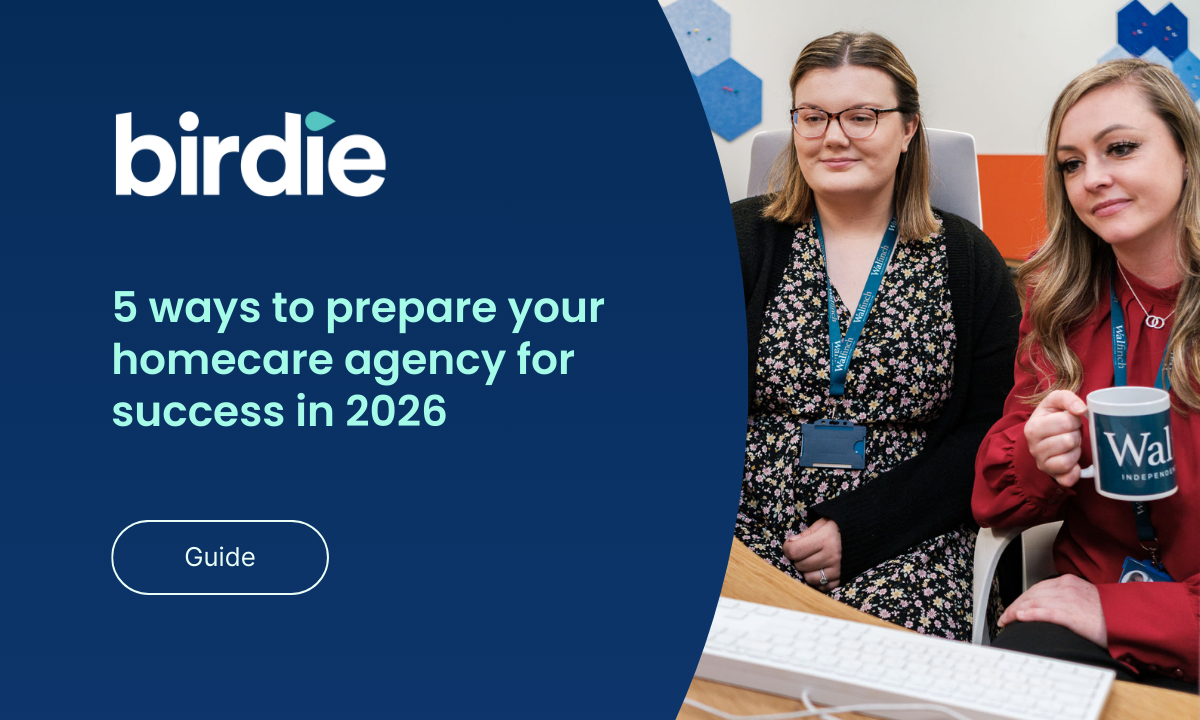Table of contents
Can you tell the difference between a meaningful conversation and a regular one?
What makes you so sure? Can you describe a time when you’ve had a meaningful conversation?
See what I did there? The beginning of this article opened by introducing a meaningful conversation. One that encouraged you to think, respond and delve into your answers, using real life examples.
Every care planning journey starts with a conversation. But, if that conversion isn’t meaningful, despite your best intentions you'll struggle to create a truly personalised care plan. Don’t worry if you’re not sure how to have a meaningful conversation. It’s a skill that needs to be learned and perfected, and we’re here to help. This blog will talk about some of the most effective ways to have a meaningful conversation, to set you up for success when it comes to care planning.

Listening skills using the PACR method
Effective listening is one of the best ways to ensure you capture the important information when having a conversation with someone in your care.
Effective listening is a skill that might require some external training, but we’ve summarised one approach to effective listening below that you might want to try. It’s called PACR (Paraphrase, Ask, Check and Respond) and it’s a great way to structure your conversations to ensure you get the most from them.
Paraphrase:
After every response to a question, paraphrase the words and feelings of the person. You could use phrases like:
“What I hear you saying is…”
“I’m picking up that you’re feeling…”

Ask:
Once a person has responded to your initial question, don’t just leave it there. Ask for more information to really enrich your care planning by using direct questions like:
“Can you expand on that?”
“Can you tell me more about your experience?”

Check:
It’s really important that you check that your understanding is correct. This is a really key part of effective listening, so be sure to check exactly what the person means. A good way to do this is to offer your own example. Try:
“So when I [do x], would that be an example of what you’re saying?”
“Let me check that I’m clear. Is [x] a good example of this?”
![Speech bubble that says: “So when I [do x], would that be an example of what you’re saying?”“Let me check that I’m clear. Is [x] a good example of this?”](https://cdn.prod.website-files.com/5d88c99c4242035babdd9f33/66d85d917495454da2f1096a_605376b05bbf78ce1990ee0e_Screenshot%25202021-03-18%2520at%252015.47.51.png)
Respond:
To round off your question, respond with your own point of view. This helps a person feel heard and understood, and offering your own point of view makes the conversation feel two-way and involved. You could say:
“Yes, I understand why you feel that way.”
“That makes sense to me, I know how you feel”

Misunderstanding
If you use the PACR technique above, you should reduce misunderstandings greatly. If you misunderstand a person, you can record the wrong or incorrect interpretation of what was said, which could leave gaps in understanding.
To help you, we wanted to share a few tips on how you can try to avoid this.
After every conversation, summarise, recap, paraphrase or ask questions to check that you have correctly heard and understood. This gives a person the opportunity to correct any misunderstanding. Useful phrases for your armoury include:
- “Can I just check that I’ve understood this correctly? You have said that…”;
- “Let me check that I’m clear about your symptoms. You tell me that…”;
- “I want to be sure I understand what you mean…”;
- “What you seem to be saying is…”;
- “Could you tell me more about…”
Top tips for effective conversations:
Be empathic and respectful
Use phrases like, ‘I understand completely’, ‘I’m sorry you feel like that’, ‘I agree it’s not easy’ to help express your empathy. No one wants to feel criticised and using empathetic language will help a person feel heard.
Be collaborative
The crux of good care planning is keeping a person at the centre of every decision. Ensure that the people in your care always feel like you are on their side by engaging in collaborative discussions and decision making. Make it clear that you understand their Phrases such as, ‘Let’s see what we can learn together?’, ‘Can we work on this together?’, ‘What could we do differently?’, ‘Can we agree on this?’ should help to develop an effective and collaborative relationship.
Offer feedback and encouragement
Encouraging and motivating people is a really useful skill for effective communication. By recognising when the individual is struggling and reminding them of any past successes you can help encourage them to move towards their goals. Use phrases like: ‘You’ve done it before, and I know you can do it again’, ‘Just take small steps at a time’, ‘You are doing really well. Keep it up!’.
Explore their concerns
If a person has concerns about any aspect of their care or life, you should help them explore it and see how you can support them. They may be resistant to a change or be struggling to overcome a personal barrier - identifying this and having an open conversation can help you to collaborate on the best way forward. Ask things like: ‘I’m picking up that you might not be happy with the way things are going. Can you tell me what’s bothering you?’.
Applaud success
Keep the individual motivated and moving forward by celebrating small successes on the way to their bigger goals. SMART care planning can help you to set achievable milestones to celebrate at every stage of the journey.
Clarify uncertainties
If any part of your conversation is unclear, be sure to clarify any uncertainties. Don’t be afraid to ask directly, or admit that you are uncertain. Building a good rapport will help you to freely admit when you don’t understand. You can try phrases like: ‘Can I just double-check what you mean by that?’, ‘Will you tell me what you think you should do if this happens?’, ‘Let’s just confirm that we are both thinking along the same lines.’
Summarise discussions
Whether verbally or in writing it’s important to recap and summarise your conversations. It might help to ask the individual to run through what has been agreed. This will help you to check their understanding and will help them to remember the discussion, and will give you the confidence that you have recorded and discussed everything correctly.
We hope this article helps you feel ready to have some meaningful conversations with the people in your care. Download a printable, PDF version of this guide, so you can refer to it quickly and share it with your staff.
Or, if you’re ready to translate your conversations into goals, why not try the SMART care planning method?
Want to see how Birdie could help? Our care planning tools make recording meaningful conversations easy with digitised assessments that you can update in real-time.
Chat with a Care Consultant today.
Published date:
March 18, 2021
Author:
Emma-Lee Curtis


















.svg)